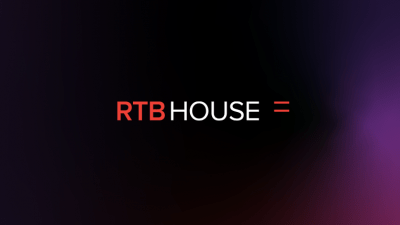Last Updated on: 24th May 2024, 09:47 pm
Over the past two years, the entire advertising industry has been lively discussing the impending deprecation of third-party cookies and its implications for each side of the ecosystem. There are countless articles outlining the general concept of Google’s Privacy Sandbox and its alternatives, as well as assumptions on what will happen to the industry as a whole. However, when it comes to frequency capping – one of the most important tools for both publishers and advertisers, and arguably the least controversial one privacy-wise – there is not enough media coverage, apart from some calls to address the topic.
At RTB House, we decided to change this, by providing a detailed analysis of the tools which aim to satisfy the frequency capping use case without the need for third-party cookies. You can find it in the whitepaper prepared by Przemysław Iwańczak and myself.
Published in the SSRN database and reviewed by some of the most respected experts and scholars in the field, such as Garrett Johnson (marketing professor specializing in the privacy aspects of digital advertising), the whitepaper is now available to you.
What is covered in the whitepaper
The article starts with the context. How did the problem of ad fatigue arise? What made the internet the first medium ever with the possibility to control the advertising frequency? We then explain the benefits of this application from the perspective of three key internet stakeholders: 1) users who don’t want to see the same ad over and over again; 2) publishers who depend on the experience of users visiting their websites; and 3) advertisers for whom displaying the same ad to the same user too many times is a waste.
The second part of the article is devoted to the threat posed by the withdrawal of third-party cookies to the frequency capping mechanisms. At this point, we also wanted to describe the reasons for the deprecation of cookies, which are the questioned practices related to the use of individual user data. Importantly, the frequency capping mechanism itself does not contradict data protection, so there should be no reason to disable this functionality in a cookieless world.
The next part is dedicated to the analysis of the methods currently available in browsers. These can be used to replace the mechanisms based on third-party cookies, but only in very limited cases. The first of the analyzed tools are first-party cookies on publisher websites, which can support frequency management use cases in the context of a single website. The second one, first-party login data, is also restricted to a single domain, but if the user truly logs in, the frequency can be managed across devices. On the other hand, not all users log in, so the scale will be limited. We discuss the potential of using the approximation of user movement on the internet without actually tracking cross-site behavior. As the last two methods, we discuss identity providers – deterministic and probabilistic. As they operate based on different data points: login data like emails or phone numbers for deterministic and various data points like IP address, geolocation, and others for probabilistic ones – the limitations on both of these types differ. However, it is known that both methods are already limited in scale, which is expected to become even more problematic due to the announced privacy improvements in major browsers.
In this section, we discuss the innovative, emerging marketing APIs that will be built within major browsers like Chrome and Edge. In the case of the former, they are developed under the extensive Privacy Sandbox initiative. Within this initiative, two large proposals have mechanisms that can help with frequency capping – the FLEDGE and Shared-Storage proposals. As the whole initiative is based on the concept of keeping user data privately stored on the device, the mechanism is expected to work adequately. A similar, but slightly different approach is heralded by Microsoft in their Parakeet proposal. Although the key anonymization mechanism in this proposal will be a server-side browser-provided service, the data relevant for frequency capping will, similarly to FLEDGE, be kept on the user device. We also recognize the efforts of vendors of other browsers in the area of developing privacy-centered tools, but they don’t seem to offer frequency capping possibilities.
The whitepaper ends on a positive note, that the frequency capping use case is vital for the future web ecosystem, and while technological changes result in challenges, this application will certainly be available. We also wanted to point out some of the key questions which can be used for future research and regarding adjacent topics to frequency capping.
We invite other industry participants to share their perspectives on these or other aspects of the future of open internet advertising.






